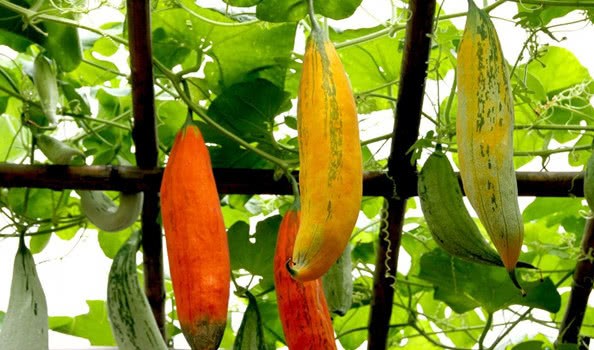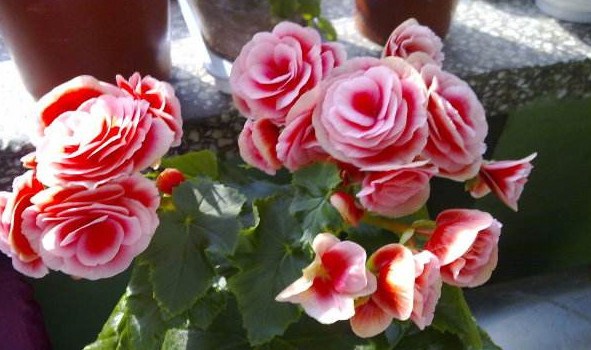How to cultivate mouse melon? Planting and maintenance skills of mouse melon in greenhouse

Mouse melon is a new type of melon and fruit, which can not only be eaten but also used for viewing. Its characteristic is that it looks like a mouse. The young melon is green and slowly turns red after it is stated. It has a very high ornamental value. The following editor will talk to you about the planting and maintenance skills of rat melon.
Growth habits of mouse melon
Rat melon belongs to tropical and subtropical melons, distributed in South Asia and Southeast Asia. It is understood that mouse melon has strong adaptability, tolerance to drought and lax light requirements.
Cultivate strong seedlings
As mouse melons can be planted year-round in the greenhouse, they can be sowed and raised in advance according to the needs of the exhibition. It takes about 40 days from sowing to blooming, and about 90 days to turn red when the melon is ripe. In order to maintain the luxuriant landscape effect, the sowing and seedling cultivation of mouse melon need to be completed in a special seedling greenhouse.
Control of environmental conditions in seedling shed
During the period of cultivating strong seedlings, if the indoor temperature exceeds 30 ℃, it is necessary to pay attention to ventilation for dehumidification and cooling, otherwise the conditions of high temperature and high humidity will easily lead to diseases and insect pests of mouse melon seedlings.
Seed treatment
Before sowing, the seeds should be sterilized in warm water of 50: 55 ℃, soaked for about 10: 15 min, and stirred continuously during the period. Then soak it in clean water at room temperature, and then promote the bud in a thermostat. When the germination rate reaches about 80% or the bud grows to 2: 3 mm, the seeds can be sowed. If it is a coated seed, it can be sown directly.
Sowing seeds
To facilitate transplanting, the seeds of mouse melon are usually sown in a nutrition bowl with a diameter of 15cm. The cultivation substrate can be a mixture of peat: perlite at 7:3, and sterilized with carbendazim.
Usually sow 1 seed in a nutrition bowl. Before sowing, use your fingers to point out a nest slightly larger than the seed in the substrate, then place the germinated seed flat in the nest, be careful not to break the bud, cover it with a layer of matrix and compact it slightly.
Transplant
When the melon seedlings grow 6-7 true leaves, they can be transplanted to the landscape greenhouse. In order to keep the landscape greenhouse clean and tidy, dovetail boxes can be used for cultivation. Before transplanting, put the newly prepared and sterilized cultivation substrate (peat: garden soil: perlite volume ratio is 3:2:1) in the dovetail box, and transplant the mouse melon seedlings into the dovetail box, 1 seedling in 1 box. Then put the dovetail box neatly on the porch rack or the edge of the umbrella tower for the desired landscape. Carefully pull the melon seedlings and tie them to the gallery rack. After that, the melon seedlings are free to climb and cover the entire gallery shelf.
Note that the substrates of seed sowing and melon seedling transplanting must be strictly sterilized, so it is very important for mouse melon plants that can be used to cultivate healthy seedlings and do a good job of pest prevention.
Management and maintenance
The extension period of melon seedlings is after transplanting, when the mouse melon is in the rapid growth stage and needs more water and fertilizer, so drip irrigation can be used for integrated water and fertilizer irrigation.
In the process of free climbing of melon seedlings, draw some crooked melon seedlings slightly, make them evenly cover the gallery frame, and clean up the dead branches and rotten leaves in time in the process of melon seedling growth. Artificial pollination can be adopted to improve the fruit setting rate at flowering stage. Mouse melons in the later stage of maturity need to be picked in time to collect seeds.
Mouse melon is very popular in recent years because of its unique appearance, so it is cultivated as an ornamental plant in many leisure farms, and it has strong vitality and is easy to breed. It only needs to pay attention to the construction of landscape effect and the prevention and control of diseases and insect pests.
- Prev

And water the flowers with potassium dihydrogen phosphate? Stop it. If you don't learn the right way, it won't boil more and more.
With the improvement of people's living standards, more and more people fall in love with growing flowers, especially some flowering potted plants, such as longevity flowers, crab claw orchids, gentleman orchids, inverted golden bells, roses, rose, gardenia.
- Next

How to cultivate Rieger Begonia? Scientific cultivation and Management skills of Rieger Begonia in greenhouse
Rieger Begonia is a rose begonia, which is characterized by rich colors and beautiful flowers. Because of its unique ornamental value, it is a new favorite of indoor ornamental flowers. It can watch both flowers and leaves. It is a very good potted flower.
Related
- Wuhan Hospital Iron Tree Blooming Result Was Instantly Frightened by the Gardener Master
- Which variety of camellia is the most fragrant and best? Which one do you like best?
- What is the small blue coat, the breeding methods and matters needing attention of the succulent plant
- Dormancy time and maintenance management of succulent plants during dormancy
- Minas succulent how to raise, Minas succulent plant pictures
- What are the varieties of winter succulent plants
- How to raise succulent plants in twelve rolls? let's take a look at some experience of breeding twelve rolls.
- Attention should be paid to water control for succulent plants during dormant period (winter and summer)
- Watering experience of twelve rolls of succulent plants
- Techniques for fertilizing succulent plants. An article will let you know how to fertilize succulent plants.

